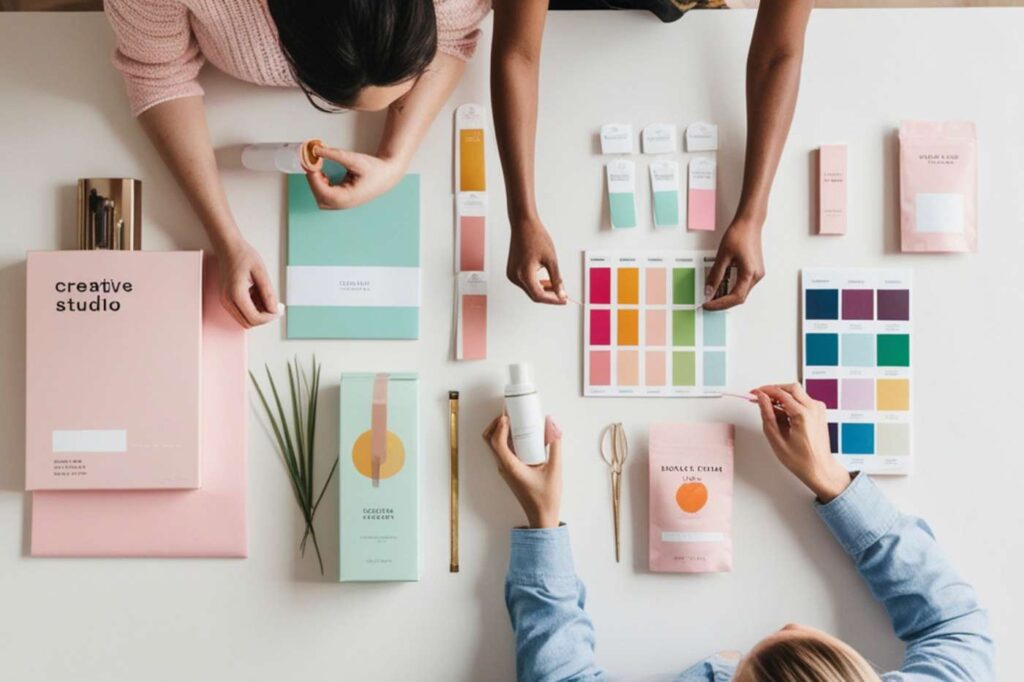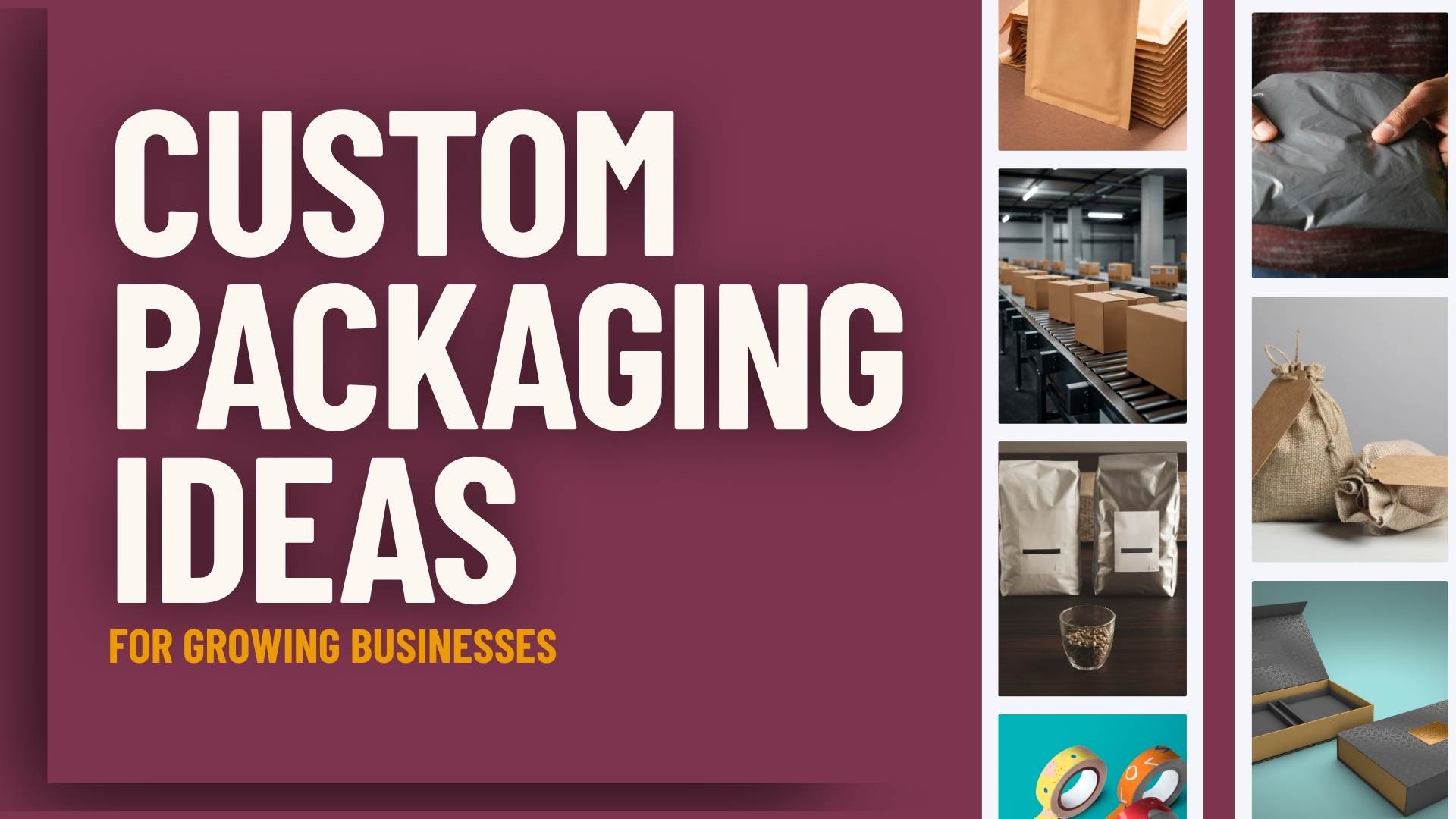AI is everywhere right now, and packaging design hasn’t escaped the hype. Tools like ChatGPT, MidJourney, and DALL·E all promise fast, low-cost ways to create concepts and track design trends, which can feel like a dream for startups aiming to cut costs. These platforms promote AI packaging solutions and AI-driven packaging workflows that automate early creative stages.
The problem is that what looks like a shortcut often leads to bigger risks—AI doesn’t understand your brand story, can’t truly innovate (often imitating the existing market), and offers no accountability if something goes wrong.
It’s not that AI packaging design and advertising are entirely bad, but customers are more cautious than many brands realise. A report by Click found that 61% of customers said their purchase decisions wouldn’t be influenced if a business used AI-generated content in their marketing, showing that AI alone doesn’t win consumer trust.
1. Lack of Human Creativity
One of the first problems with AI packaging design is its inability to innovate. AI can whip up designs fast, but it doesn’t truly “think outside the box.” Its ideas come from patterns in data, so you might end up with packaging that looks a lot like what’s already out there.
As a business owner, you still need a human touch to bring in storytelling, originality, and emotional appeal—things that really make your brand stand out.
Even with machine learning in packaging, creativity still relies on human imagination, not just smart design algorithms for packages.
2. Limited Understanding of Context
AI doesn’t always “get it.” For example, it might create a design that looks sleek but doesn’t fit your brand values or connect with your target customers. Humans naturally understand cultural details, tone, and subtle messaging—AI doesn’t. That means you’ll still want someone on your team to guide and refine the direction, even if you’re using AI for product packaging or experimenting with intelligent packaging systems.
3. Dependence on Data Quality
The quality of AI’s output depends on the data it’s trained on. If that data is outdated, biased, or too generic, the designs you get won’t match your market needs. For a startup, this could mean wasting time on packaging that misses the mark. Always pair data-driven packaging solutions with real customer feedback and market insights to keep designs relevant.
4. Over-Reliance on Automation
It’s tempting to let AI handle everything because it’s fast and affordable. But if you rely too much on it, your packaging could lose the personality and unique vibe that makes your brand memorable.
Customers can spot when something feels “cookie-cutter,” so you’ll want to balance AI efficiency with human creativity. Overuse of automated packaging design can make your brand appear generic instead of distinctive.
5. Technical Limitations
High-end AI design platforms can be expensive, and some require technical knowledge to use effectively. For small businesses and startups, this can be a real barrier. While there are affordable tools out there, they often come with limitations, so you might need outside support for more advanced work, such as AI-enhanced package design or advanced AI design tools for packaging.
6. Intellectual Property and Copyright Concerns
AI packaging designs raise tricky questions: who actually owns the final design—you, the software company, or the designer who set things up? For small businesses, this can be confusing, and the last thing you want is a legal issue over your packaging. Clear contracts and human oversight are key, especially when using custom packaging with artificial intelligence or AI-powered branding and packaging tools.
7. Bias and Fairness
AI learns from data, and sometimes that data carries hidden biases. That means the packaging concepts it produces might unintentionally exclude or misrepresent certain groups of people. As a brand, you don’t want packaging that sends the wrong message, so it’s important to double-check AI’s work through a human lens.
8. Accountability and Transparency
AI isn’t perfect—sometimes it produces results that don’t make sense, and it’s not always clear why. If something goes wrong, it can be hard to pinpoint where the issue started. That’s why human oversight is essential—you need someone to make the final call and ensure the design matches your brand’s vision.
9. Sustainability Trade-Offs
AI can recommend eco-friendly packaging, but it doesn’t always consider real-world supply chains or your local budget. For example, it might suggest materials that look great on paper but are too expensive or hard to source for a small business.
Human judgment is still needed to weigh cost, availability, and practicality. Sustainable AI packaging and eco-friendly AI-driven packaging solutions sound promising, but they still need realistic execution.
10. Reputational Damage
One mistake in packaging can undo years of brand-building. Imagine if your AI-generated label forgets to include a mandatory allergen or misuses a cultural symbol—it could trigger recalls, compliance penalties, or public backlash. Customers remember these slip-ups, and recovering trust can be far more costly than investing in professional oversight from the start.
A good example is the viral Willy’s Chocolate Experience in Glasgow, where organisers used AI-generated marketing images to promote a magical chocolate world. Families paid for tickets expecting immersive attractions, only to arrive at a bare warehouse with poor props and no promised delights. (our friends at Golden Casket heard all about it, and did a fantastic job stepping in and helping the families by sending sweets and putting a smile back on children’s faces).
The backlash for Willy’s Chocolate experience was immediate, police were called, and the brand behind the event was destroyed overnight. Just like misleading marketing, relying too heavily on AI without proper checks can lead to reputational disasters that spread quickly online.
Environmental Effects of AI Packaging Design

The risks of AI go beyond branding mistakes—they also extend to the environment. AI tools, especially image-generation platforms, require massive computing power that comes with significant environmental costs. Let’s look at how this plays out in digital packaging innovation.
Energy Consumption
AI tools, especially image-generation platforms like MidJourney or DALL·E, require large amounts of computing power. Training and running these systems use significant energy, often sourced from non-renewable grids. While a single session might seem minor, widespread use at scale contributes to a higher carbon footprint —an ongoing issue tied to robotic automation in package design.
Hidden Carbon Costs
According to research by the University of Massachusetts, training a large AI model can emit over 626,000 pounds of CO₂, which is about the same as the lifetime emissions of five cars. Most small businesses don’t see this impact directly, but relying heavily on AI tools makes them indirectly part of that rising energy demand.
Greenhouse Gas (GHG) Emissions
The energy needed to power AI systems often leads to considerable GHG emissions, especially when the electricity comes from non-renewable sources. Globally, AI and data centre operations already account for 1–2% of total electricity consumption.
In addition, experts note that inference (the repeated use of AI after training) consumes nearly 60% of a model’s total lifetime energy compared with 40% for training, which means the environmental cost keeps growing long after a model is built.
Hardware and E-Waste
AI depends on high-performance servers, GPUs, and other specialised hardware. These components eventually wear out, contributing to the global e-waste problem. Manufacturing new hardware also consumes raw materials, adding to the environmental load.
Where AI Can Help Businesses: The Early Stages of Packaging Design

AI is best seen as a starting point, not a complete solution. For small businesses and startups, it can speed up the early creative process and give you something to react to before investing heavily in design. Here’s where AI really shines in the early stages:
- Generating Inspiration and Mood Boards: AI can instantly generate mood boards with colour palettes, design styles, and visual themes. This is especially helpful if you’re not sure how to translate your brand values into packaging visuals.
- Producing Rough Visualisations: Instead of paying upfront for multiple design rounds, you can use AI to mock up quick concepts of your product in boxes, bottles, pouches, or cans. These aren’t final, but they help you imagine how your packaging might look on a shelf.
- Supporting Market Research: AI can scan online stores, trend reports, and even competitor designs. It helps you see what’s trending, what consumers are responding to, and where there’s a gap you can stand out.
- Exploring Multiple Directions at Once: One of AI’s biggest strengths is speed. You can generate 10–20 design directions in minutes. This allows you to compare ideas side by side and decide which style feels closest to your brand vision.
- Saving Time and Money in the Concept Phase: You won’t waste budget going back and forth with a designer in the “idea stage.” Instead, you bring AI-generated drafts to your packaging agency or designer, giving them a strong foundation to refine.
- Testing Early Reactions: Some businesses use AI-generated packaging ideas in small focus groups or on social media polls. This provides quick feedback on what resonates with your audience before investing in professional design.
- Helping With Storytelling: AI tools can suggest messaging, taglines, and even copy styles for your packaging. While these won’t replace a brand strategist, they give you a base to refine into your own brand voice.
The Value of Working With an Experienced Packaging Agency

This is where the human touch becomes invaluable. Agencies bring expertise that AI can’t match:
Agencies Bring Expertise In:
- Branding Strategy: Packaging isn’t just about looking good. It’s about reinforcing your brand identity, values, and story. Agencies make sure your packaging is consistent across every channel—on the shelf, online, and in the hands of your customers.
- Packaging Structure and Materials: An agency knows what type of packaging will keep your product protected, cost-effective, and sustainable. They weigh options between cartons, pouches, labels, or custom structures that AI simply can’t account for.
- Marketing Communications: Good packaging communicates benefits instantly. Agencies craft messages, visuals, and layouts that grab attention and convert browsers into buyers.
- Consumer Positioning and Trend Awareness: Agencies monitor what’s trending in your industry and what consumers expect. That knowledge helps ensure your packaging feels fresh, relevant, and competitive.
- Regulatory and Technical Compliance: Agencies ensure designs meet print specifications, barcode placement, nutritional labelling (if applicable), and other legal requirements—areas where AI often falls short.
- Sustainability Guidance: With growing demand for eco-friendly packaging, agencies bring practical knowledge of recyclable materials, supply chain realities, and cost-effective green alternatives, helping you avoid “greenwashing” or impractical AI suggestions.
Turning AI Ideas Into Print-Ready Packaging
AI can help you brainstorm colours, layouts, or themes, but those rough ideas still need to be transformed into designs that can be manufactured. Agencies step in to:
- Refine visuals to match technical printing requirements
- Ensure designs fit your chosen packaging format
- Source the right paper, film, or eco-materials for your budget and sustainability goals
- Double-check that labelling, barcodes, and nutritional information (if required) meet legal standards
- Add finishing touches such as embossing, foiling, or custom die-cuts that elevate your design beyond a template look
Working with the right partner makes all the difference. At Goulding Media, we combine creativity, strategy, and technical know-how to turn concepts into packaging that customers actually connect with.
If you’re looking for a reliable packaging designer in the UK, our team is here to make sure your packaging not only looks great but also delivers real results for your brand.
Wrapping Up
AI packaging design has its place, but it should never be mistaken for a complete solution. Customers are becoming more discerning, and trust isn’t built through shortcuts. The safest and smartest path is to use AI as a support tool in the brainstorming stage, then work with an experienced packaging agency to refine those ideas into professional, compliant, and market-ready designs. This balance ensures your packaging not only looks great but also tells your story, connects with customers, and protects your brand for the long term.



